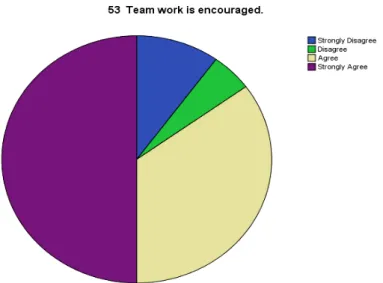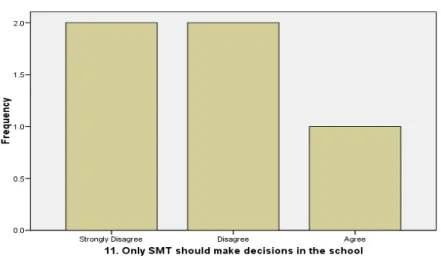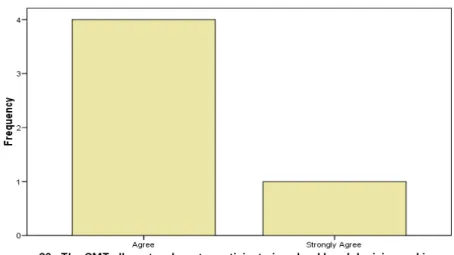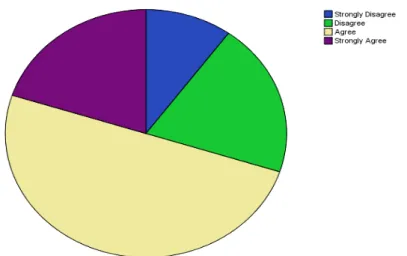As such, it is now a platform for definitive engagement in promoting teacher leadership in South African schools. Lack of time, teacher leaders themselves, paper overload and constant policy changes were some of the factors that hindered the establishment of teacher leadership in schools.
Re-conceptualisation of Educational Leadership and Management Leadership in South Africa schools during apartheid was linked to headship and was
In contrast, and as a result of the new dispensation in South Africa, educational leadership and management practices at schools require urgent review. Leadership and management in the new policy framework is seen as a group activity rather than the domain of the principal and those in formal leadership.
The status of Teacher Leadership in South African Schools
According to the Department of Education, the most critical challenge for teacher training in South Africa was the limited knowledge of many of the teachers (DOE, 2006) which I believe has a negative impact on the institution of teacher leadership in schools. In other words, I argue that teacher leadership is a prerequisite for schools to meet the demands of the 21st century school system.
RATIONALE OF THE STUDY
To me, this policy framework and other educational initiatives would strengthen distributed leadership practices in schools and prepare teachers for their teacher leadership roles beyond the classroom. However, despite this enabling policy and other educational initiatives, many schools do not respond to teacher leadership.
RESEARCH AIM AND QUESTION
RESEARCH DESIGN AND METHODOLOGY
This is echoed by Smylie (1995) when he writes that "Teacher leadership is an organizational phenomenon". I used quantitative methods such as survey questionnaires as well as qualitative methods such as focus and individual interviews, journals, direct observations and document analysis to describe the phenomenon of teacher leadership.
MY INVOLVEMENT IN A GROUP RESEARCH PROJECT
I used convenient sampling when conducting the research at my current school because I wanted to get a nuanced picture of the implementation of teacher leadership. In total, we planned a sample of 33 teacher leaders to gain a rich and in-depth view of teacher leadership.
THEORETICAL FRAMEWORK
Therefore, the vision of the group project was to examine the common themes of the enactment of teacher leadership, together with the factors that either impede or enhance the application of all 11 case studies, so that some kind of reliable and trustworthy generalizations can be illuminated at the end. of the project. Empirical studies of effective leadership and school improvement both in the USA and the UK highlight that the authority to lead does not have to be located in the person of the leader, but can be distributed within the school organization (Harris and Muijs, 2005).
OUTLINE OF THE THESIS
In contrast to the traditional idea of leadership where individuals manage hierarchical systems and structures, distributed leadership allows for collective leadership, in which teachers develop expertise by working together. To me, distributed leadership is about using the collective expertise of all individuals in any leadership initiative at the school.
CHAPTER TWO
INTRODUCTION
LITERATURE REVIEW AND THEORETICAL FRAMEWORK
TRADITIONAL NOTIONS OF LEADERSHIP
In light of the above, I argue that management and leadership are not synonymous concepts and both processes are important for the successful implementation of teacher leadership practices in schools. To me, each process has its own unique role to play in the effective management of teacher leadership in schools.
LEADERSHIP AND MANAGEMENT AS DISTINCT PROCESSES
This can be perceived as the Task Team considering leadership and management activities as one, or that there is a fundamental slippage in the use of the terms (Grant 2008). Therefore, the responsibility for improving the quality of teaching and learning in South African schools is in the hands of both formal and informal leaders of the school.
- Why the need for change?
Cooperation in the school is seen through the involvement of staff and other stakeholders in the functioning of the school. In the next part of the chapter, I discuss the distributed model of leadership that those in formal leadership and management positions can use to promote teacher leadership practices in schools.
DISTRIBUTED LEADERSHIP THEORY
- Characterization of distributed leadership used in my study
- Limitations of Distributed Theory
A further limitation of distributed leadership theory lies "in the implicit tension between theoretical and practical interpretations" (Harris and Spillane, 2008, p.32). This to me illuminates accountability for a school's success as a limitation of the distributed leadership practice model.
DEFINITIONS OF TEACHER LEADERSHIP
In the next section of the chapter, I go on to discuss the growing research on the concept of teacher leadership. Similarly, Grant (2005) notes that teacher leadership must be understood in the context in which it operates.
THE ENACTMENT OF TEACHER LEADERSHIP
Representation of educators on school boards and chairing well-being, culture and sports committees are some of the roles in teacher leadership implementation that encompass this facet in the South African context. Grant (2006), based on the work of Devaney (1987), offers a model of teacher leadership for the South African context, in which teacher leadership is divided into four levels or zones.
BARRIERS OF TEACHER LEADERSHIP
Similarly, Harris (2003) writes that the non-acceptance of teacher leaders by colleagues is a barrier to teacher leadership. The lack of rewards in leadership roles is also another barrier to teacher leadership in schools.
FACTORS THAT ENHANCE TEACHER LEADERSHIP
- Collaborative School Cultures
- Professional Learning Communities
- School Structures
- Teacher Leadership skills
- Professional Development
According to Muijs and Harris (2007, p.129), “teacher leadership must be deeply anchored in the culture of the school”. In the next part of my discussion, I discuss some of the barriers that hinder the implementation of teacher leadership in schools.
CONCLUSION
Therefore, the task of school leaders is to motivate staff to improve performance and create conditions under which teacher leadership flourishes (Katzenmeyer and Moller, 2001). As mentioned earlier, the success of teacher leadership depends on the context in which it takes place.
CHAPTER THREE
INTRODUCTION
- RESEARCH AIM
- RESEARCH PARADIGM
- RESEARCH DESIGN: A CASE STUDY APPROACH
- LOCATION OF THE STUDY
- Context of Case Study School
- SAMPLING AND PARTICIPANTS
- GAINING ACCESS TO THE CASE STUDY SCHOOL
- ETHICAL ISSUES
- DATA COLLECTION
- School Observation
- Survey Questionnaire
- Focus Group Interviews
- Individual Interviews
- Participant Observation
- Self-Reflective Journals
- Documentation
- DATA ANALYSIS
- VALIDITY AND TRUSTWORTHINESS
- LIMITATIONS OF THE STUDY
- CONCLUSION
I was open to the influence of context on the way teacher leadership was shaped by the three teacher leaders. In this way, I got a rich and detailed account of the context that influenced the introduction of teacher leadership at the school. The school year planner also gave me data on the nature of the implementation of teacher leadership in the school.
CHAPTER FOUR
INTRODUCTION
DATA ANALYSIS
THE ENACTMENT OF TEACHER LEADERSHIP BY BRENDA 1 1. Description of Brenda: The Subject Specialist
- Enactment of teacher leadership in the zone of the classroom (zone one)
- Teacher Leadership in the area of Whole School Development
- Teacher leadership across schools and into the community
Brenda's 90% score on the first four measures of the 2008 IQMS report further supports my assessment. Brenda noted in her diary that she had a Teacher Liaison Officer (TLO) at the school over the years: “In the past I was in charge as a TLO. In the following discussion, I will shed light on Brenda's enactment of teacher leadership in the fourth zone of the model.
THE ENACTMENT OF TEACHER LEADERSHIP BY NANCY 1. Description of Nancy: The Curriculum Developer
- Teacher leadership in the Zone of the Classroom
- Participation in performance evaluation of teachers at case study school The LO educators trusted Nancy’s knowledge and expertise in the learning area and, as a
- Teacher leadership in the area of Whole School Development 1. Institution Learner Support Team Secretary
- Teacher leadership across schools and into the community 1. Networking and providing curriculum knowledge
My observation of the 2008 developmental support groups at the school revealed that Nancy was on the DSGs of the PE educators at the school (I.Q.M.S, 2008). Nancy spoke to me in her individual interview about her role as the secretary of the ILST. Nancy's role as the chair of the health committee indicated that she was active in organizing and leading peer reviews of school practices in her own school (Zone 3, Role 6).
THE ENACTMENT OF TEACHER LEADERSHIP BY MARK 3 1. Description of Mark: The Disciplinarian
- Enactment of teacher leadership in the Zone of the Classroom
- Teacher leadership through working with other teachers in curricular and extra- curricular activities
- Teacher leadership in the area of whole school development 1. Change Agent
As the sports coordinator, he also planned "the school's athletic meet and all activities related to sports at the school" (I.I, p.2). His role in the DSG indicates that he is involved in performance evaluation of educators at the school (Zone 3, Role 4). As Mark was actively involved in the community's religious group, he decided to start Hindu religious services at the school.
FACTORS THAT ENHANCED TEACHER LEADERSHIP AT THE SCHOOL 1. A Culture of Collaboration
- Authorised Distributed Leadership
- Skills and values that fostered teacher leadership
- Availability of Teaching Resources
- Expertise in subject
- A culture of trust
The following discussion highlights common personal traits of teacher leaders who enhanced their teacher leadership roles in the school. As a result, the three teacher leaders had more time to take leadership in the school. All three teacher leaders cited trust as a factor that also enhanced their teacher leadership roles in the school.

- Top-down leadership practices
- Policy changes and paper overload
- Poor learner discipline
- Teachers as a barrier to teacher leadership
- Lack of remuneration
In the next part of the chapter, I discuss the factors that hindered the implementation of teacher leadership in schools. Similarly, all three teacher leaders pointed to the principal's autocratic control as a factor that hindered his implementation of teacher leadership in the school. More than 60% of teachers in the case study school cited school micropolitics as a barrier to teacher leadership.

CONCLUSION
Similarly, lack of time was also an important factor that hindered the adoption of teacher leadership in the school. Failure to reward teacher leaders for leadership roles beyond the classroom also hindered the adoption of teacher leadership in schools. The principal's autocratic leadership practices and bureaucracy stifled teacher leadership in the school.
CHAPTER FIVE
INTRODUCTION
CONCLUSION
- SUMMARY OF FINDINGS
- Holistic Enactment of Teacher Leadership
- Authorized distributed leadership an avenue for teacher leadership
- Dispersed distributed leadership
- REFLECTIONS ON THE RESEARCH PROCESS 1. Case study methodology
- Group Research Project and Analytical Model
- LIMITATIONS OF THE STUDY
- RECOMMENDATIONS FOR FURTHER RESEARCH
- CONCLUSION
One of the main factors that hindered teacher leadership in the school was limited time. Furthermore, a lack of reward in leadership roles also hindered the implementation of teacher leadership in the school. However, as my research found that the holistic implementation of teacher leadership in schools was promoted by Gunter's characterization of.
Coleman (eds) Leadership and Strategic Management in South African Schools, pp.155-173. 7th ed.) New York: McGraw-Hill. Help teachers develop as leaders. 2008).Teachers' perceptions and experiences of teacher leadership: a survey in the Umlazi district, KwaZulu-Natal. Unpublished Masters Thesis. Education transformation 2003: From systemic reform to policy review, quarterly review of education and training in South Africa Teacher leadership - Improvement through empowerment.
TEACHER LEADERSHIP IN ACTION 2008 - 2009 APPENDIX 1
SCHOOL OBSERVATION SCHEDULE
Background information on the school o Name of the school
Staffing
Curriculum: What teaching and learning is taking place at the school?
Leadership and decision-making, organisational life of the school
Relationships with Education department and other outside authorities
TEACHER LEADERSHIP IN ACTION 2008 - 2009
TEACHER QUESTIONNAIRE
INSTRUCTIONS FOR QUESTIONNAIRE
BIOGRAPHICAL INFORMATION 1. Gender
Instruction: Put a TICK in the column that best describes your opinion about the role of teacher leadership in your school. Instruction: Please answer with a CROSS either Yes/No/Not applicable to your involvement in each committee. If YES, answer with a CROSS by choosing ONE option between: Nominated by colleagues, Delegated by SMT or Voluntary. Instruction: Put a CROSS in the column that best describes your opinion about which factors support or hinder the teacher's leadership.
Teacher Leadership: Open-ended questions
- What is your understanding of teacher leadership? Please explain
SMT QUESTIONNAIRE
BIOGRAPHICAL INFORMATION
SCHOOL INFORMATION
What do you think is hindering the development of teacher leadership within your school?
Thank you for your time and effort!
TEACHER LEADERSHIP IN ACTION 2008 – 2009
Dialogue
Collaboration
Organisational change
Has developed an understanding of own cultural identities and a deeper understanding/respect for cultural differences. Developmental views of children translate into concern for all children in the school (not just those in one's own classroom) and their future. Works with colleagues to develop programs, policies that take a holistic view of child development (eg, multigrade classes, parent education, follow-up surveys).
TEACHER LEADERSHIP IN ACTION: 2008 – 2009
ZONES AND ROLES MODEL OF TEACHER LEADERSHIP (Grant, 2008)
TEACHER LEADERSHIP IN ACTION: 2008 – 2009 APPENDIX 6
TEACHER LEADER JOURNAL ENTRIES
Think about yourself as a teacher leader and the personal attributes you have that make you a teacher leader. Are there any other attributes that you think are important that you would like to develop to make you an even better teacher leader. Think of yourself as a teacher leader and the knowledge and skills you have that make you a teacher leader.
INDIVIDUAL TEACHER LEADERSHIP INTERVIEW: BRENDA
INDIVIDUAL TEACHER LEADERSHIP INTERVIEW: NANCY
INDIVIDUAL TEACHER LEADERSHIP INTERVIEW: MARK
You will be free to withdraw from the research at any time without negative or unwanted consequences for yourself. Your identity will be protected in accordance with the ethical rules set out by the University of KwaZulu-Natal. Furthermore, feedback will be given to you during and at the end of the project.

